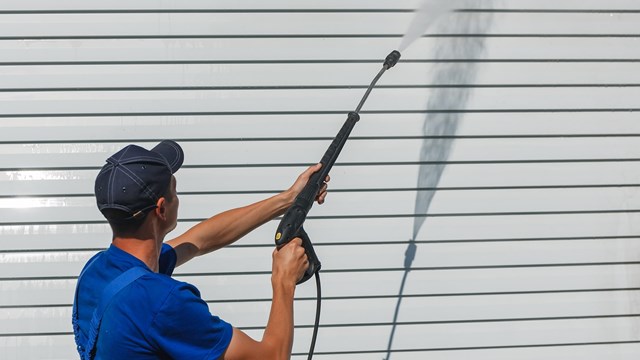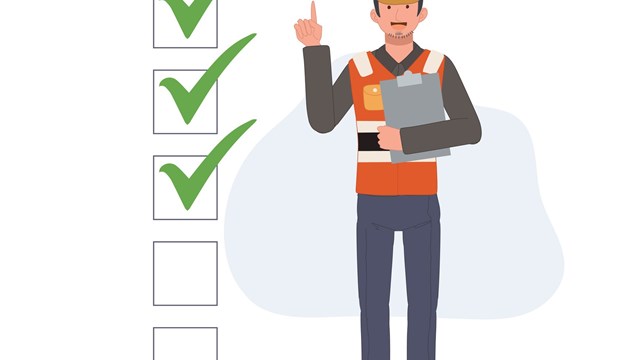
It's a common enough story: the condominium was relatively new, but from the start its board of directors was stingy with maintenance and repair dollars. Then the recession struck, and the percentage of unpaid maintenance fees spiked.
After several years of neglected physical facilities, half the condo's elevators weren’t working. Unpainted interior hallways and uncleaned carpeting and tile encouraged mold and mildew growth. Utility bills went unpaid for so long that the electric company threatened to cut off the power, and garbage collection was sporadic. Due to mismanaged collections and finances, the community was on the verge of bankruptcy.
“Unfortunately, we’ve stepped into roles like that. We had a building in the Chicago suburbs that was not tended to,” says Adam Stolberg, CMCA, AMS, and president of Advantage Management in Chicago. “Instead of a special assessment and asking owners to put in thousands of dollars each, we had an engineer come in and advise us, then we made a list of everything that had to be done. We bid it out, and some of the things were able to be done by the same vendors so we got substantial discounts. We cleaned up the delinquencies and financials. The people who didn’t pay were sent to the association's attorney, and we got them to pay. In some unfortunate cases in Illinois it allows the condo association to take possession of a unit in arrears and rent it out. So we did that. Then we went to the bank and said, ‘We need to borrow some money.’ The interest rates were very low. We borrowed the money and got all the projects done at once. We created a budget for the next three years that included the debt service to the bank. So instead of the owners having a huge increase in assessment—they got to pay it off over time and they got to enjoy all of the repairs being done at once. It took about 10 months.”
Absolute Essentials
Industry experts believe that at the top of everyone’s maintenance list should be life-safety items for which code violations could prompt steep fines from a government inspector, or even closure of a building. This category includes elevators, fire extinguishers, sprinkler systems, smoke alarms, carbon monoxide detectors, and painting of curb corners to meet fire-marshal requirements.
“The major maintenance project that must be addressed and never delayed depends on the type of community and the exact responsibilities of the association,” says James Tomlin, CMCA, and director of building services for ACM Community Management in Downers Grove. “In general, any common element that provides for the safety of the homeowners should be regularly inspected and maintained. In addition to elevators, security doors, lighting and fire detection or suppression systems all emergency backup systems should be maintained. Smoke detectors should have their batteries changed twice a year and emergency lights and exit signs should be checked and repaired at the same time.”
Tomlin also notes that in older communities with a history of plumbing backups, regular routing and scoping can minimize the frequency of major backups and the damage they cause.
“There are so many maintenance projects that should be addressed on an annual or semi-annual basis it’s hard to pin down just a couple,” says Gayle Hahn, a property manager at All the Difference Inc., a Chicago-area property management company based in Western Springs, “Gutters are important. They need to be cleaned at least twice a year because they can have things growing in them or they can have leaves in them and that can cause damming in the winter. If they are not cleaned they could clog. So you want to do them twice a year. We do them in the spring after all of the budding has stopped and we clean them again right before winter.”
Where Water Resides
Tomlin recommends at least annual maintenance of cooling towers and HVAC (heating, ventilation and cooling) systems, including water treatment to control fouling, microbes, scaling and corrosion.
“I think there are two things that must absolutely be addressed on an annual basis and never delayed,” says Stolberg. “The number one thing is routing all of the plumbing stacks and plumbing risers so that garbage and sewage doesn’t back up. It’s much easier to do that annually, in some buildings twice a year, than to get a call in the middle of the night and someone saying ‘my kitchen sink is backing up and I have sewage, food and waste all over my kitchen floor.’ The other thing is servicing boilers and chillers at the appropriate time. Usually we try to service the boilers over the late summer, the end of August or September so if we do need to fire them up for a cold, early fall, which does happen in Chicago, there won’t be a problem. The chillers a little more difficult because you can’t get on the roof, 40 stories in the air in snow and wind—so we like to service chillers in the early spring, in Chicago we could have 75 degree days in March.”
Experts say that water leaks are the leading cause of damage in condominiums and believe that most leaks run between walls, underground, and/or in areas that are not readily visible and that raised sidewalks, water bubbling on the lawn, and spidering around storm drains may disclose underlying problems with storm-water and fresh-water lines needing prompt attention.
What Can Be Deferred
An association with a reserve study and a reserve budget based on that study should have the money, but if it isn’t available such items can be postponed for a while or completed in stages over a period of several years. Even if reserves are properly funded, they don’t cover certain emergencies, such as a lightning strike that blows up the air-conditioning compressor. The life of domestic water pumps and motors can be prolonged by having multiple units and setting them to run on an alternating basis. Thus, if a pump motor is made to last 20 years, alternating between pumps may yield another five to 10 years from each motor.
“A lot of maintenance items that can be put off are board-discretionary and based on aesthetics rather than physical pieces of equipment,” says Stolberg. “Things like painting or lobby renovations are things that can certainly be put off. Also, enhancing common areas, replacing decks can be deferred. Landscaping can be tricky—it can be put off but on the other hand it’s an inexpensive way to show the general public a neat, clean ‘we care about our building’ appearance, but sometimes that can get expensive. So some buildings will landscape once a year instead of seasonally.”
Hahn agrees with Stolberg that painting is a maintenance item that can be put off if there is a tight budget.
“If a building is on a painting rotation they could probably use a very good grade of paint or caulk and defer that,” she says. “So a lot of times a painting project could be put off a year or two.”
“Wish list items that only impact appearance and will not damage other building components if neglected can be put off,” adds Tomlin. “Improvement projects like remodeling a clubhouse or meeting room can be delayed provided they are not in an unsafe condition. If the budget is tight, regular services like cleaning and landscaping can be competitively bid to reduce those costs. Routine cleaning of the common areas may be reduced to cut cost but not less than once a week. Some landscape maintenance like mulching around trees can be skipped with little or no adverse effects depending on what was done the year before. Those items would vary from community to community based their individual situation.”
Seeking Professional Guidance
Experts believe that when deciding which repair and maintenance projects require immediate attention and which can be deferred boards need to rely on someone qualified or certified or both.
“Hiring a company that specializes in performing reserve studies is a good place to begin,” says Tomlin. “An up-to-date reserve study is most useful tool for planning and prioritizing maintenance needs. A good reserve study will outline the items that require maintenance and repairs and when they should be done. Contractors who specialize in the maintenance or community associations are usually a good source of free advice. Just be sure to get three or more opinions like you would if soliciting bids for a project. Engineers can be used for this purpose but are usually brought in to advise on an individual project.”
“A reserve study is an examination and subsequent report performed by engineers,” says Stolberg. “They take an inventory of every piece of equipment that the building has from mechanics to painting to roofs. It evaluates the conditions of those items today and estimates how many years of useful life those items have. It will also estimate replacement cost down the road and factors in inflation.”
In some situations, experts in state and local government agencies may be available to assist at little or no cost.
Does Waiting Raise Costs?
Tomlin believes there are both pros and cons on waiting to do an improvement project.
“Generally, I would not advise waiting on a project. Improvement projects that have hidden conditions which may conceal further damage should be addressed quickly,” he says. “Exterior building components like roofing and siding are good examples of this. All building envelope systems will fail and the end result is water infiltration. Even if there are no signs of leaks in the building there is usually damage to the materials underneath. This damage may remain unseen and continue to get worse until the work is done. Repairing this type of damage can’t be included in the price of the project since it is hidden and the quantities are unknown. These repairs are usually made on a per unit of time and material basis. If the project is overdue, the additional cost of these repairs can be more than the original cost.”
George Leposky is a freelance writer and editor and a frequent contributor to The Chicagoland Cooperator. Staff Writer Christy Smith-Sloman contributed to this article.






Leave a Comment